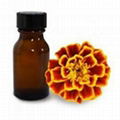| Model: | NH08 |
|---|---|
| Brand: | Nature Herbs |
| Origin: | Made In India |
| Category: | Agriculture & Foods / Gardening / Plant Seeds |
| Label: | Botanical Extract , Herb Seeds , Essential Oils |
| Price: |
-
|
| Min. Order: | 100 kg |
| Last Online:28 Feb, 2015 |
Turmeric, Curcuma longa L., rhizomes, ground turmeric, turmeric oils, turmeric oleoresin, curcuminoids, curcumin,
sesquiterpenes, marker compounds, adulteration, standardization.
Dried Whole Rhizome
Preparation: mother rhizomes (egg-shipped primary rhizomes) and finger rhizomes (cylindrical and multibranched secondary rhizomes) are usually boiled separately for about 40-60 min under slightly alkaline conditions in copper, galvanized iron or earth vessels and then sun-dried on bamboo mats for 10-15 days to reduce the moisture to 10-11% Harvest: usually 7-9 months after planting during January-March Appearance: orange-brown, pale yellow or red-yellow Chemical Composition: may contain 3-15% cucuminoids and 1.5 to 5% essential oils.
Uses
Medicine (Rhizoma Curcumae Longae) and process of other turmeric products
Ground Turmeric
Preparation: Powder is prepared from dried finger rhizomes (60-80 mesh)
Appearance: yellow or red-yellow powder
Chemical Composition: The contents of active ingredients curcuminoids and essential oils may decrease
during the process and exposure to light, it is appropriate to pack the powder in a UV protective container
(e.g., fiber hard drums, glass packs, etc.)
Uses
Spice: as alone or in curry powder and pastes dye: for food, textile, cosmetic
Medicine: e.g., in Ayurveda, Chinese medicine
Dietary supplement
Turmeric Oils
Preparation: Extract from dried rhizomes (ground turmeric) or leaves by steam distillation or supercritical
CO2 extraction
Chemical Composition: essential oils from leaves is usually dominated by monoterpenes while the oil
from rhizomes mainly contains sesquiterpenes
Appearance: yellow to brown viscous liquid
Refractive Index: 1.4850-1.5250
Flash Point: 78°C
Solubility in Water: insoluble
Uses
Spice, Medicine & Dietary Supplement
Turmeric Oleoresin
Preparation: Extract from dried rhizomes by solvent extraction with aceone, dichloromethane, 1,2-
dichloroethane, methanol, ethanol, isopropanol and light petroleum (hexanes) or supercritical
CO2extraction. Graded by the content of curcuminoids or color value
Chemical Composition: 37-55% curcuminoids and up to 25% essential oil
Appearance: yellow-dark reddish brown oily fluids
Refractive Index: 1.4850-1.5250
Flash Point: 78°C
Solubility in Water: insoluble
Uses
Food Coloring, Medicine & Dietary Supplement
Curcumin
Preparation: obtained by solvent extraction from ground turmeric rhizomes and purification of the extract
by crystallization. The suitable solvents include aceone, carbon dioxide, ethanol, ethyl acetate, hexane,
methanol, , isopropanol
Chemical Composition: the product is often the mixture of curcumin and its demethoxy- and bisdemethoxy-
derivatives in turmeric in varying proportions. The three major curcuminoids may account
no less than 90%. Minor compounds may include oils and resins naturally occurring in turmeric rhizomes
Appearance: yellowish to orange red crystalline powder
Molecular Formula: C21H20O6
Molecular Weight: 368.38
Solubility in Water: insoluble
Uses
Medicine & Dietary Supplement
Variations of Essential Oils
There are significant variations in both content level and constituents of essential oils of turmeric rhizomes with geographical locations. Among the 27 accessions North Indian plains at Lucknow, India, the percentage essential oil content in the fresh rhizomes varied between 0.16% and 1.94% (on a fresh weight basis) [101]. Although usually sesquiterpenes, particularly Ar-turmerone (99), -turmerone (100) [83], and -turmerone (101) are major compounds in turmeric oils in Asia, presence of other compounds in C. longa often vary with various locations. By using GC-MS analysis, Chowdhury and his coworkers identified 54 compounds of essential oils from the “yellow type” of C. longa while only 39 compounds were detected from the “red type” growing in Bangladesh. The essential oil in “yellow type” were dominated by ar-tumorone (99) (27.78%), turmerones (100 and 101) (17.16%), curlone (141) (13.82%), 2-carene (73) (4.78%), zingiberene (124) (4.37%) and - sesquiphellandrene (136) (5.57%), but the “red type” oil mainly contained carvacrol (43) (21.14%), citral (13.91%), methyleugenol (229) (7.31%), geraniol (86) (6.99%), menthol (46) (5.11%) and caryophyllene oxide (168) (4.14%). However, there is no significant difference was observed in essential oil composition between T3C turmeric and Hawaiian red turmeric [79]. Unlike those from Asia, interestingly, turmeric oils from Brazil contained 50-80% of ar-turmerone (99), (Z)--atlantone (137), and (E)--atlantone
(138) [81, 92]. (Z)--atlantone (137) and (E)--atlantone (138) are only found in the turmeric from Brazil. Without information of which cultivars or varieties were used in these studies, however, it is impossible to determine the difference caused by geographical or genetic variation. Constituent of essential oil varies with different species of Curcuma [119- 125]. For example, curcumene, a minor compound in C. longa, is the major constituent (approx. 65%) of the essential oil of Javanese turmeric (C. xanthorrhiza) [46].











